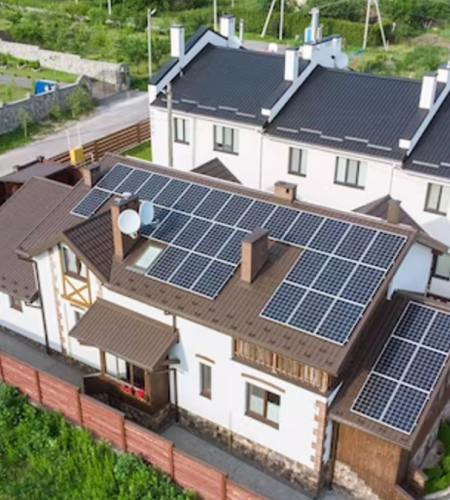In a world where climate change concerns have reached a critical point, the quest for renewable energy solutions has never been more urgent. Among the array of sustainable options, solar energy stands out as a beacon of hope, promising clean, renewable power that can mitigate environmental impact and reduce reliance on fossil fuels. In this article, we delve into the financial landscape of solar panels in 2024, exploring costs, benefits, and considerations for eco-conscious investors.
Breaking Down the Costs
When contemplating the installation of solar panels, understanding the financial dynamics is paramount. The solar panel prices can vary significantly depending on several factors, including system size, type of panels, installation process, additional components, and location-specific labor costs.
1. System Size Matters
The size of the solar panel system directly influences its cost and energy-generating capacity. For an average household, a system suitable for accommodating the energy needs of a family of four typically falls within the range of £5,000 to £8,000. However, prices can fluctuate based on the system’s size, measured in kilowatts (kW).
- A 4kW system, comprising approximately 10 panels, is a popular choice among homeowners. Despite its price tag of around £7,000, it can generate an impressive 3,750 kilowatt-hours of electricity annually.
Remember, as the system size increases, so does the cost. It’s crucial to assess your household’s energy requirements and budget constraints to determine the optimal system size.
2. Cost Breakdown
Let’s delve into the breakdown of costs associated with solar panel installations:
- System Size: The cost per kilowatt-peak (kWp) typically ranges around £2,246. For instance, a 2.1 kWp system for a smaller residence (1-2 bedrooms) might cost approximately £4,700, while a larger 4.9 kWp system for a spacious home (4-5 bedrooms) could amount to £11,000.
- Type of Panels: The choice between monocrystalline and polycrystalline panels affects the overall cost. Monocrystalline panels, known for their higher efficiency, range from £1.60 to £2 per watt, whereas polycrystalline panels are relatively more affordable, priced between £1.20 to £1.60 per watt.
- Installation Process: Professional installation costs an average of £1,500. While some homeowners opt for DIY installation to cut costs, it’s advisable to enlist the expertise of professionals to ensure optimal performance and safety.
- Additional Components: Consider investing in extras like solar batteries for energy storage (£1,200 – £6,000) and pigeon-proofing measures (£150 – £300) to safeguard your investment and enhance system efficiency.
- Location and Labour Costs: Labour costs, ranging from £200 to £400 per day, vary based on geographical location and installation complexities.
Understanding Degradation Rates
Solar panel performance degradation over time is a crucial factor to consider when evaluating the long-term viability of investments. Degradation rates, influenced by environmental factors and system design, impact the lifespan and efficiency of solar panel systems.
Research on degradation rates conducted on a standard 4 kW PV system highlights the importance of location-specific factors. Simulations revealed that the inverter’s lifespan in different locations varied significantly due to thermal stresses and intrinsic PV degradation rates.
In areas with higher temperatures and environmental stressors, such as Kabd, the inverter’s lifespan may be considerably shorter compared to more temperate regions like Genk and Accra. Introducing linear PV degradation models can mitigate the impact, potentially extending the lifespan of solar panel systems and enhancing overall performance.
The Financial Benefits of Solar Investments
While the initial investment in solar panels may seem daunting, the long-term financial benefits outweigh the upfront costs. Here are some compelling reasons why solar investments make financial sense:
- Reduced Energy Bills: Solar panels harness free, abundant sunlight to generate electricity, significantly reducing or even eliminating dependency on grid-supplied power. This translates to substantial savings on energy bills over the system’s lifespan, providing a favorable return on investment.
- Government Incentives and Rebates: Many governments offer lucrative incentives, rebates, and tax credits to promote renewable energy adoption. These financial incentives can offset installation costs and accelerate the payback period, making solar investments more appealing to homeowners and businesses alike.
- Increased Property Value: Solar-equipped properties command higher resale values and appeal to eco-conscious buyers seeking sustainable features. Studies have shown that homes with solar panels sell faster and at premium prices compared to non-solar properties, enhancing overall property value and marketability.
- Hedging Against Future Energy Costs: Solar investments offer protection against volatile energy prices and inflationary pressures associated with traditional fossil fuel-based energy sources. By generating clean, renewable power onsite, solar panel owners insulate themselves from fluctuating energy costs and future price hikes, providing long-term financial stability and peace of mind.
Conclusion
In conclusion, investing in solar panels in 2024 represents a prudent financial decision with substantial environmental and economic benefits. By understanding the financial landscape, including upfront costs, degradation rates, and long-term returns, investors can make informed decisions that align with their sustainability goals and financial objectives. With advancing technology, declining costs, and growing environmental awareness, solar energy continues to emerge as a cornerstone of the transition towards a greener, more sustainable future. Embrace the power of the sun, and embark on a journey towards eco-friendly investments that pave the way for a brighter tomorrow.

